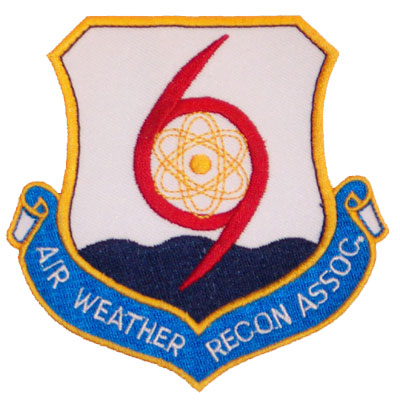 |
514th Reconnaissance Squadron,
(Very Long Range) Weather
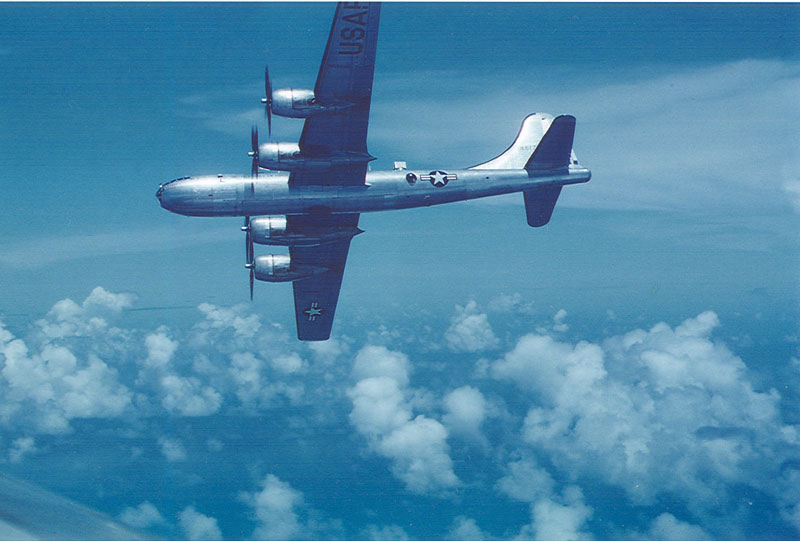 |
| Photo by Arthur R. "Ray"
Brashear All Rights Reserved |
One of the "new" WB-29s in flight. Note that the Air Sampling Foil is located on top of the fuselage and all openings for the gun turrets have been permanently sealed and covered over. Also, the paint was removed, exposing the bare metal again. Lighter, faster, prettier ... |
|
This
month's page was inspired by several factors. The primary one
being a set
of beautiful color snapshots received from Ray Brashear. Ray was
the Operations Officer on Guam from October 1949 to October 1951.
He
also was a photography buff and took many wonderful pictures.
I
also have noted that there is much confusion, even among veterans who
were there, about the many name changes in weather reconnaissance in
the late 1940s through 1955. The future Guam squadron
trained at Morrison Field, West Palm Beach, FL, and deployed to Guam as
the 54th Reconnaissance Squadron (VLR) Weather. They arrived at
North Field, Guam, during June 1947. Lets remember that many
exciting things were going on, especially the activation of the United
States Air Force as a separate service. On 20 October 1947 the
names of all of the weather reconnaissance squadrons were
changed. By HQ Air Force direction, all of the squadrons should
have 3-digit numbers. Thus the 54th became the
514th. All personnel and equipment were transferred to this
"new" unit. One of the factors creating some confusion is that
the name 514th was associated with a WWII heavy bomber squadron, thus
they had a separate lineage from the name 54th, which had come from a
different bomber squadron. In some tellings of the 54th squadron
history, it appears as if the squadron was inactivated on Guam during
this time. We know that this is not true. In February 1951,
the names of all the squadrons were changed again. The more
familiar 50-series numbers returned, and the 514th became the 54th
Strategic Reconnaissance Squadron (Medium) Weather.
Perhaps
the Air Weather Service History office explained the early name changes
best with a special
study done in February 1959. To read this document , go
here.
For ease of reading the document was retyped from a copy of the
original. Every effort was made to keep the content exact.
|
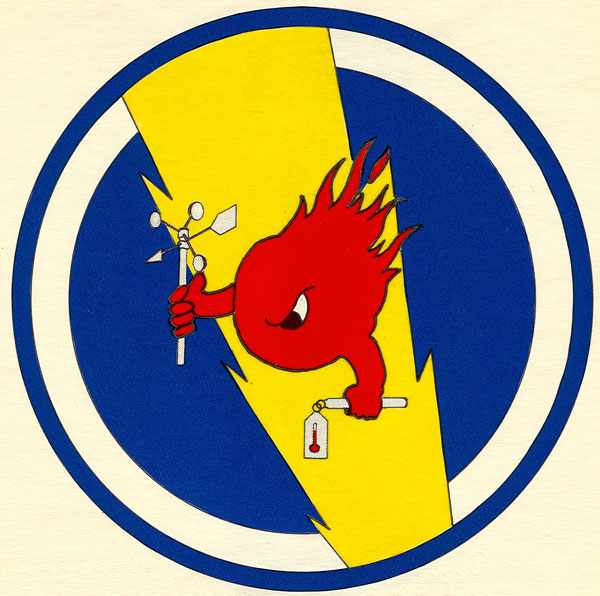 |
|
"The
Fireballs"
From
the time the 54th/514th arrived on Guam they had a reputation for
finding ways to get the job done against all odds. As a result, they
were known as
a real "fireball" outfit.
The
squadron also participated in the 1948 Operation Sandstone and the 1951
Operation Greenhouse nuclear
tests, flying from Kwajalein Atoll. Maybe a double meaning...
The
logo above was adopted in 1951 after a spirited competition. The
winning design was created by Corporal Kenneth D. Johnson.
|
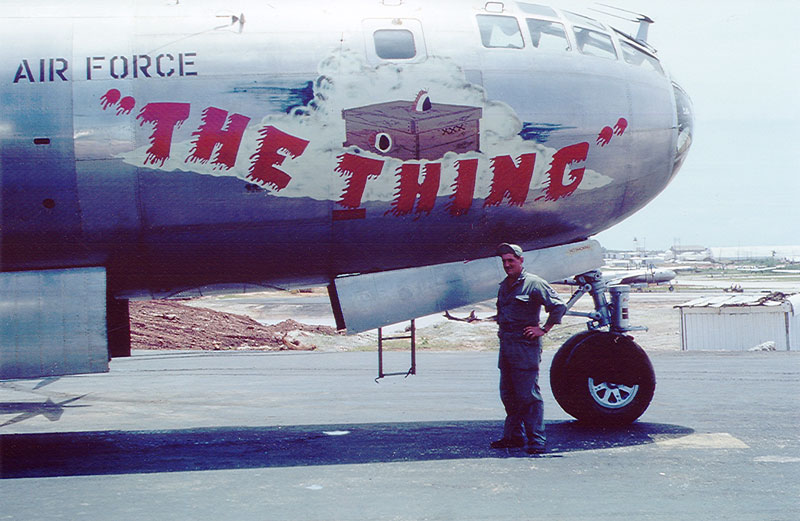 |
|
Photo by Arthur R. "Ray"
Brashear
All Rights Reserved
|
One carry-over from World War II was the tradition of assigning names to individual aircraft. The WB-29s that came to the 514th were no exception. Ray Brashear says that Aircraft 45-21824, shown above, was named The Thing after a popular Phil Harris song of the same name. The song tells of finding a box on the beach that you can't get rid of. To hear the song "The Thing", follow this link. I also have heard that the name alludes to the atmospheric sampling box (Foil) mounted on top of the aft fuselage. You know, that "thing" that you couldn't talk about .... Standing in front of 824 is Master Sergeant George B. Leighty, the primary crew chief for The Thing. |
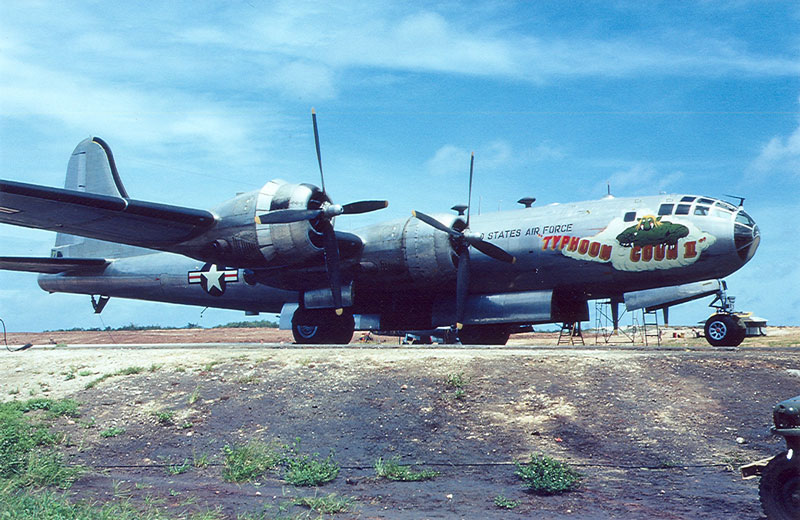 |
|
Photo by Arthur R. "Ray"
Brashear
All Rights Reserved
|
Aircraft 44-69770 was named Typhoon Goon II. The original Typhoon Goon was Aircraft 45-21838 which was stationed on Guam from January 1948 until December 1950, during which time she flew at least 25 typhoon missions. When Aircraft 770 arrived on Guam in January of 1951, she was given the Goon name to keep the tradition alive. Typhoon Goon II disappeared on a mission into Typhoon Wilma on 26 October 1952. The crew's last radio message indicated they were close to the eye and were attempting to make a low level fix 1. They were never heard from again. An intensive air and sea search was initiated, but no trace of the crew or aircraft was ever found. For a list of the this crew, go to our "Gone, But Not Forgotten" memorial page. 1. From the 54th SRS "Typhoon Topics", Nov 1952. As recorded in The Fireballs, an Unoffical History, by Robert A. Mann |
Typhoon Marge, August 1951 |
|
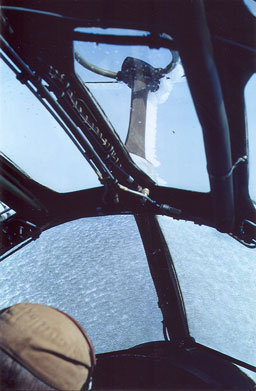 |
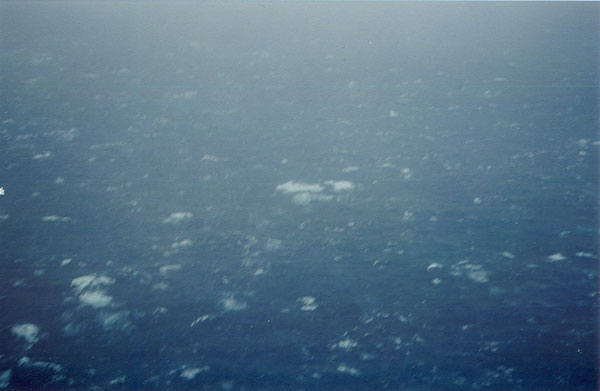 |
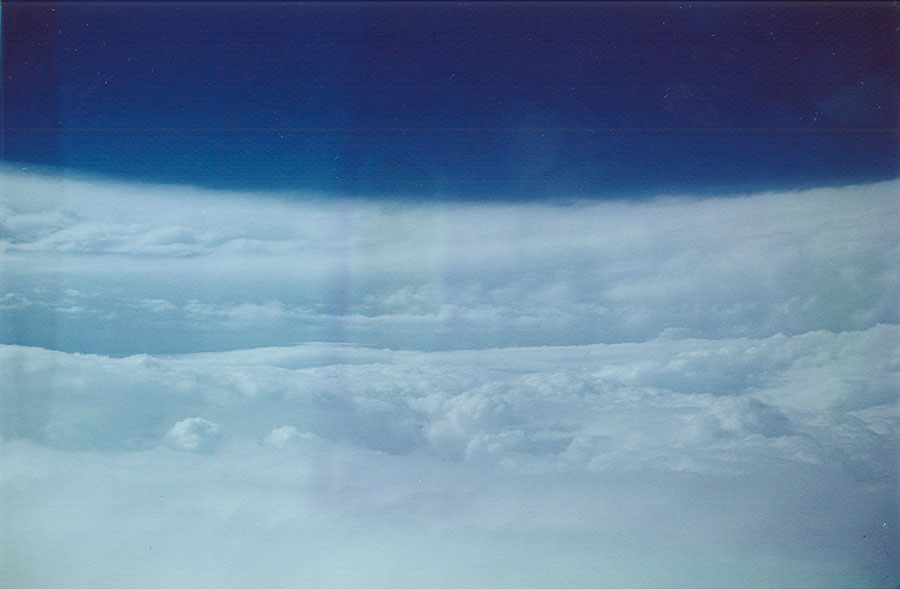 |
|
|
Photos by Arthur R. "Ray"
Brashear
All Rights Reserved
|
|
| The series of photos
above were taken on a mission into Typhoon Marge in August 1951.
The picture at the upper left shows the view out of the aircraft
"greenhouse" looking over the weather officer's head. The picture
at the upper right clearly shows the winds picking up to strong
tropical storm levels. In the days before doppler radar, the
crews relied on visual observations of surface winds and the
navigator's skill with "double drift" for flight level winds. The lower photo is a wide angle lens shot from in the eye of Marge at approximately 3000 feet. Marge was a major concern due to her potential impact on Korean War operations. The Typhoon Chasers could not keep Marge away from Korea, but their timely reports did enable the Far East Air Forces, and other services, to take actions to protect their forces. |
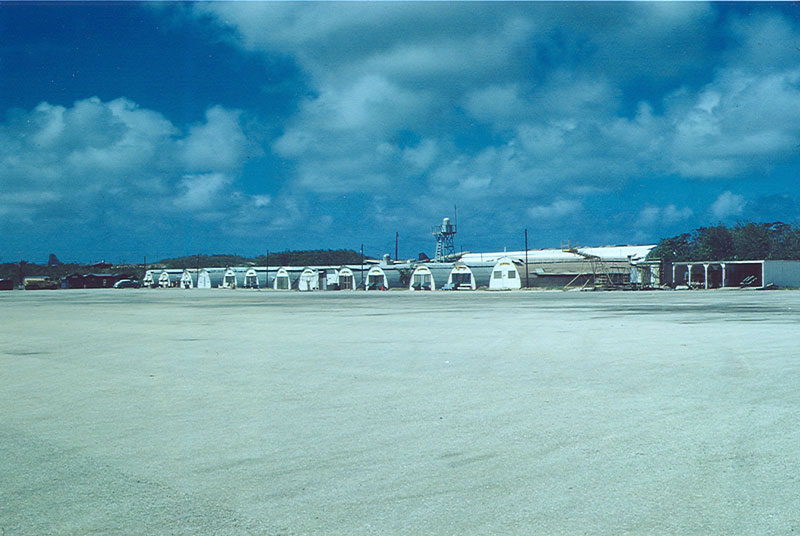 |
|
Photo by Arthur R. "Ray"
Brashear
All Rights Reserved
|
| The photo
above shows the flight line area of the 514th on a typical Sunday
afternoon. Personal vehicles, like Ray Brashear's Nash Ambassador
were allowed everywhere, even on the ramp or hardstands. This was
really true after the start of war in Korea. The
Army came and stripped most military vehicles from Andersen AFB.
This row of Quonsets housed the 514th Engineering, Tech Supply,
Personal Equipment, Operations, Navigation, Photo Lab, Intelligence and
Weather, a Welding Shop, Sheet Metal, Radar, and two buildings for the
Communications Section. The 514th Headquarters, Typhoon Club, and
Supply were located in additional Quonsets on the "Main Base", several
hundred yards away. The amount of self-sustaining capability
possessed by the squadron was the envy of many other units at Andersen. |
| We have much more to post about the
514th and life on Guam in the late 40s and early 50s. In addition
to the photos and letter from Ray Brashear, a great deal of information
has been received from Bob Mann. We will be posting more sights
and sounds of Guam soon. Please check back. |
Return to Top of Page